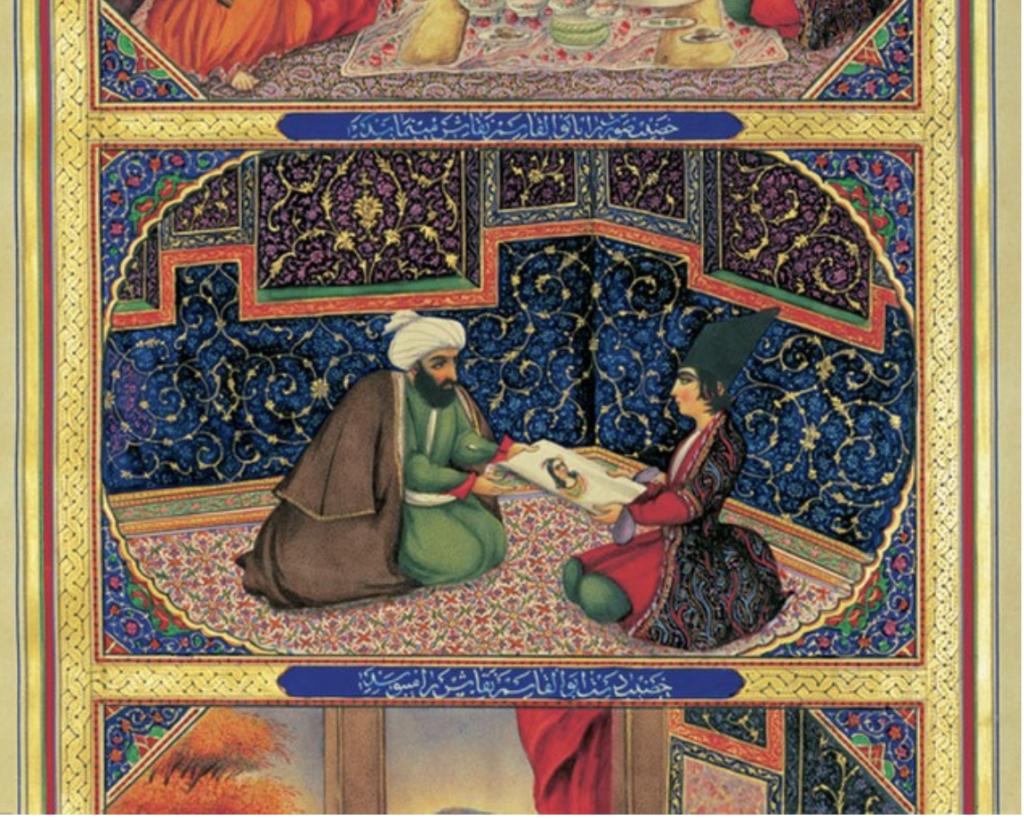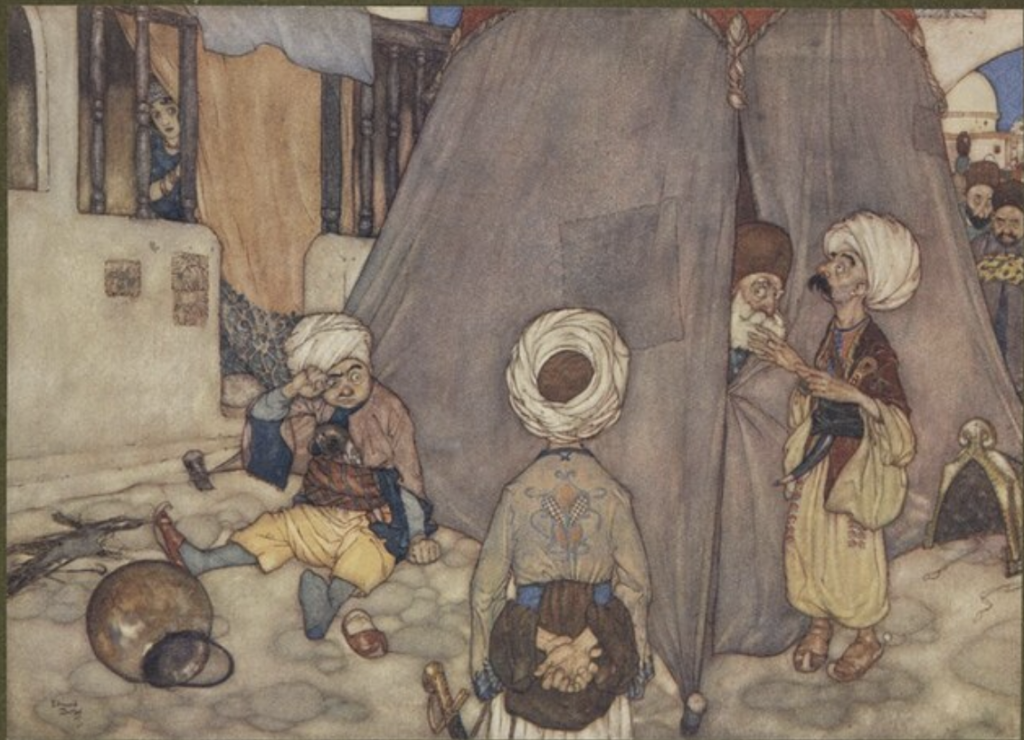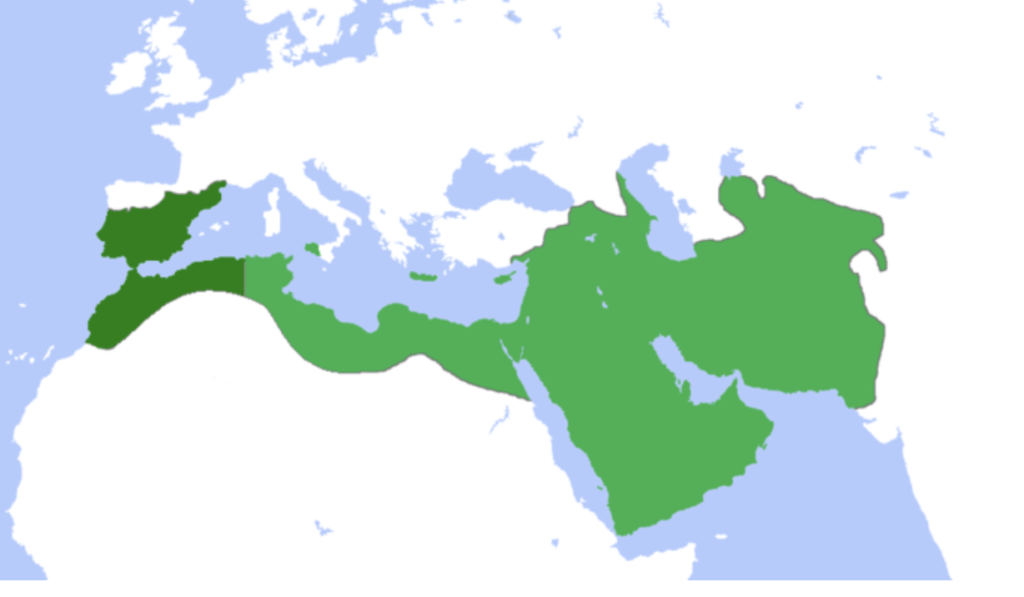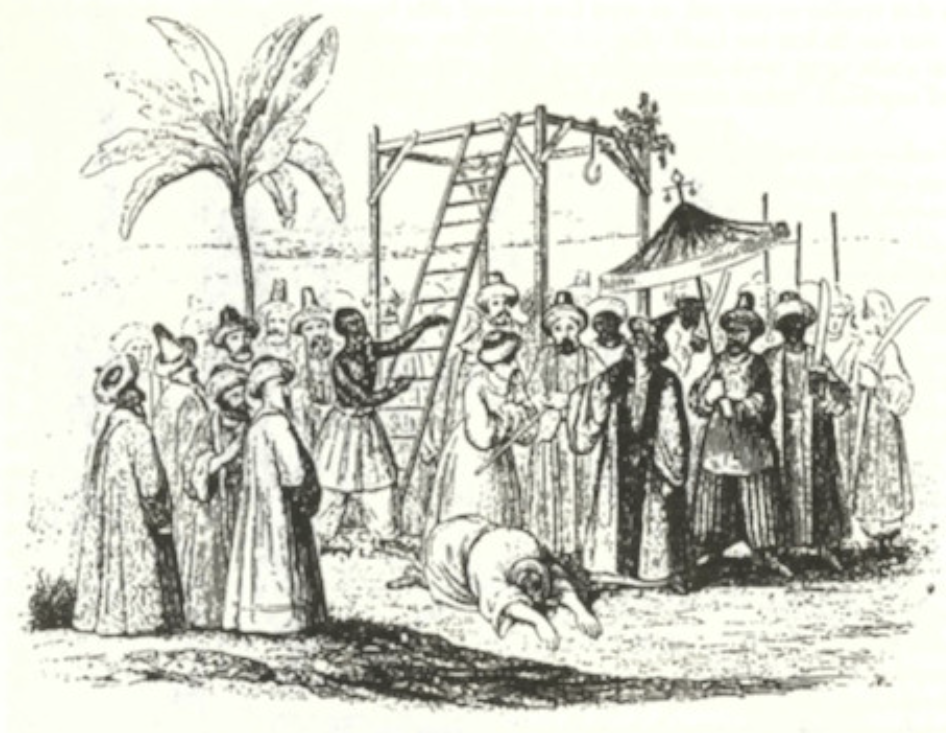Geopolitics and Empire in the Background of 1001 Nights

By: Mehdi El Merin i/ Arab America Contributing Writer
The 1001 Nights, also known as Arabian Nights, is often celebrated for its enchanting stories of magic, romance, and adventure. However, beneath the surface of these fantastical tales lies a fascinating reflection of the Islamic Golden Age’s geopolitical dynamics and imperial ambitions. The collection, which grew out of a rich oral tradition that spanned centuries and cultures, reflects the cultural syncretism of the time and the wide-reaching influence of the Islamic Empire. Through a close reading of specific stories, we can see the subtle portrayal of the geopolitics of the Abbasid Caliphate, the empire’s relationship with far-flung lands like China, India, and Byzantium, and the expanding influence of Islamic civilization across the medieval world.
The Global Reach of the Islamic Empire
At the height of the Islamic Golden Age, the Abbasid Caliphate controlled a vast territory stretching from the Iberian Peninsula in the west to the Indian subcontinent in the east. The caliphate’s capital, Baghdad, was a thriving cosmopolitan hub where traders, scholars, and emissaries from various parts of the world converged. This global interconnectedness is woven into the fabric of 1001 Nights, as many of the stories feature settings or characters from distant lands such as India, China, and the Byzantine Empire. These foreign elements are not random inclusions but reflect the caliphate’s diplomatic, economic, and cultural interactions with these regions.
For example, the story of The Ebony Horse centers around an extraordinary mechanical horse, a gift to a Persian king from a wise man of India. The plot showcases the technological marvels and knowledge exchange that occurred during the Islamic Golden Age and reflects the historical ties between the Islamic world and the Indian subcontinent. The Abbasids had extensive trade networks that linked the Middle East with the Indian Ocean, fostering economic and cultural exchanges between Arab traders and Indian princes. The tale hints at India’s importance as a site of exotic knowledge and valuable goods while also reflecting the political dynamics of gift-giving as a form of diplomacy.

The Strategic Importance of China
Another recurring region in 1001 Nights is China, which in medieval times was viewed by many in the Islamic world as a distant, wealthy, and powerful kingdom. China’s prominence in the stories is significant, as it was one of the few places not directly under Islamic rule but still maintained strong trade and diplomatic relations with the Abbasid Caliphate. In tales like The Story of Prince Ahmed and the Fairy Peri Banu, China is a land of mysterious riches and advanced craftsmanship, mirroring the real-life Chinese silk and porcelain highly valued in the Islamic world.
The Islamic Empire’s connection to China was solid during the Tang Dynasty when the famous Silk Road facilitated the movement of goods and the exchange of ideas and cultural practices. Arab merchants, envoys, and scholars regularly traveled to China, establishing a presence in port cities like Guangzhou. The fascination with Chinese craftsmanship and materials, such as silk and paper, is subtly reflected in the luxurious descriptions of Chinese goods in 1001 Nights. Through these tales, the audience is reminded of the empire’s economic reach and interconnectedness with one of the world’s other great civilizations.

Byzantium and the Islamic Empire: Rivalry and Reflection
The Byzantine Empire, another key player in the geopolitics of the time, is also reflected in 1001 Nights. The Abbasid Caliphate and the Byzantines shared a long, complicated history of rivalry, warfare, and diplomacy. As a neighboring power to the Islamic Empire, Byzantium often appears in the stories as both a source of intrigue and an adversary.
In the tale of The City of Brass, an expedition is sent by the caliph to retrieve ancient treasures from a long-lost city supposedly located in the deserts of North Africa. This story can be seen as an allegory for the Abbasid Caliphate’s attempts to assert control over North Africa. Historically, Roman (and later Byzantine) rule influenced this region. The caliph’s quest to reclaim treasures and knowledge from an ancient empire mirrors the real-life political ambitions of the Abbasids, who sought to consolidate their power over territories that had once belonged to the Byzantines.
Moreover, the depiction of the Byzantine Empire in 1001 Nights highlights a fascination with Byzantine culture, architecture, and military prowess. While the Abbasids often portrayed themselves as superior to their Christian rivals, the stories also reflect a grudging respect for Byzantine sophistication. This duality of rivalry and respect symbolizes the complex relationship between the two empires, where periods of conflict were interspersed with peaceful exchange and mutual influence.

Diplomacy and Exoticism in 1001 Nights
Another key aspect of the geopolitics in 1001 Nights is the portrayal of foreign lands as places of wonder and exoticism. The tales often emphasize the riches, wisdom, and peculiarities of distant kingdoms, be it the fabled lands of India, China, or the Byzantine Empire. This exoticism serves both to entertain and to subtly reinforce the idea of the caliphate as a central hub in a vast network of global power. Through diplomacy, trade, and conquest, the Islamic world constantly interacted with these distant places, and 1001 Nights reflect the allure and mystery of these lands, filtered through the lens of an Abbasid worldview.
The frequent mention of foreign rulers, princesses, and treasures in the stories reflects the caliphate’s diplomatic efforts to establish alliances and assert dominance over neighboring powers. Gift-giving, marriage alliances, and treaties were crucial tools in the Abbasid arsenal, and 1001 Nights subtly reflects these real-life practices. The stories present a world in which the Islamic Empire is at the center, with other civilizations orbiting around it, each bringing their unique contributions to the cultural and economic richness of the caliphate.
A Timeless Legacy
The 1001 Nights is much more than a collection of entertaining tales; it reflects the geopolitical realities of the Islamic Golden Age. Through its depictions of India, China, Byzantium, and other far-off lands, the collection highlights the global reach of the Abbasid Caliphate and its interactions with neighboring powers. Whether through trade, diplomacy, or warfare, the Islamic Empire was deeply connected to the broader world, and these connections are woven into the very fabric of the stories that have captivated audiences for centuries. In the tales of 1001 Nights, we glimpse a world where geopolitics and empire-building were as much a part of daily life as the magic and mystery that fill its pages.
Check out our Blog here!








